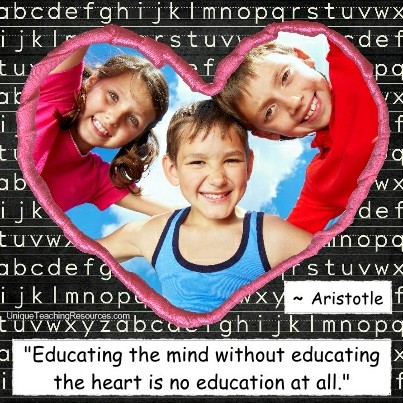Strategies for promoting a positive classroom climate:
- Get to know your students (Marzano, 2007):
- Use a questionnaire at the beginning of the year to obtain key details about your students lives
- Have a photo wall of your students with a place for them to update their feelings or current events in their lives (Marzano, 2007).
- Focus on speaking with one to two students per day (Marzano, 2007).
- Incorporate your students interests into the lessons to engage them (Marzano, 2007)
- Use humor when appropriate (Marzano, 2007).
- Be mindful of physical actions (Marzano, 2007)
- Smile
- Make eye contact
- Look interested in what students have to say
- Be there for your students (Rimm-Kaufma, n.d.).
- Answer their questions within a reasonable timeframe
- Offer support when where it seems appropriate
- Help them reflect on their learning goals and skills
- Difficult Students
- Reframe their behaviors in a way that makes them more understandable. Do not always assume it is in response to you (Marzano, 2007).
- Spend more time getting to know them; develop their trust (Rimm-Kaufma, n.d.).
- Be Consistent (Marzano, 2007).
- Evaluate at the end of the day how consistent you were when disciplining and praising students.
The classroom is not always about what subject the students are learning, it is about the environment they are learning within.
References:
Marzano, Robert J. "Chapter 8: What Will I Do to Establish and Maintain Effective Relationships with Students?" The Art and Science of Teaching: A Comprehensive Framework for Effective Instruction. Alexandria, VA: Association for Supervision and Curriculum Development, 2007. 149-61. Print.Rimm-Kaufma, Sara. "Improving Students' Relationships with Teachers to Provide Essential Supports for Learning." Http://www.apa.org. American Psychological Association, n.d. Web. 30 Mar. 2014. <https://www.apa.org/education/k12/relationships.aspx>.
Smart Hearts: Social and Emotional Learning Overview. YouTube. (16 Nov. 2010) Video. Retrieved from <https://www.youtube.com/watch?feature=player_embedded&v=4wOWEGyO60o>.
image: http://www.uniqueteachingresources.com/image-files/jpg-educating-the-mind-without-educating-the-heart-is-no-education-at-all-aristotle.jpg

No comments:
Post a Comment